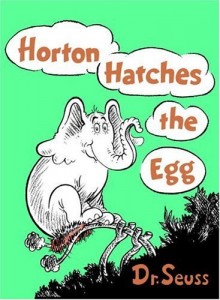Now that I have chosen the entries for my first mash-up and picked the general theme for the essay, feminist ethics: care and troublemaking, I need to develop my angle or approach. In thinking about my angle, I am trying to get at the “why bother?” and “what’s my particular take on these ideas?” questions. Here are some of my thoughts:
Troublemaking is important for feminist ethics. If you haven’t already noticed on this blog, I am particularly interested in exploring the ethical value of troublemaking. Here are some of my preliminary thoughts (from an NWSA presentation in 2007 entitled, “Judith Butler and the Virtue of Troublemaking”):
The predominate understanding of troublemaking is that it is bad, improper, and/or counterproductive, performed by those individuals or groups who are “up to no good.” But, what if we twisted our understanding of troublemaking and thought about it as useful and productive? Instead of dismissing it as that which hinders or disrupts our actions, what would happen if we embraced troublemaking as that which is essential for mobilizing us to action, enabling us to shake our cynicism and ever-increasing hopelessness? Going even further, what if we thought about troublemaking as an important ethico-political virtue for feminism and its role as a democratic movement?
Now, thinking about troublemaking as important for feminism is nothing new; indeed, feminism as a radical social movement has been based on the practice of making trouble for the status quo and those oppressive institutions that deny or strip individuals/groups of their humanity. Feminists have embraced their role as “unruly” subjects and rebellious outlaws.
So, while there is clearly a precedent for emphasizing troublemaking within feminism, not enough critical and systematic attention has been given to troublemaking—how it should be performed and what ethico-political value it has for feminist individuals. Moreover, troublemaking is still seen as improper; when feminists make trouble, they dare to be bad (borrowing from Alice Echols). They are being rebellious, rejecting traditional norms and ethics. But, what if we rethink troublemaking? What if, when feminists make trouble, they dare to be good (borrowing from Ann Ferguson and Bar Ami)? What if troublemaking allows them to create new ethical norms or at least expand upon the old ones?
Even though this description is a little too vague, I like it. Perhaps I should use it in my essay–with a few tweaks. I could contrast this with the “classic” assessment of feminist ethics as nurturing, mothering, ethics of care….Here’s a few more lines from that presentation:
Troublemaking is a practice that many of us (inside and outside of feminism) have always already done but have been discouraged from doing; thinking about troublemaking as an important virtue enables us to claim and value it. Now, I am particularly (but not exclusively) thinking about this in terms of girls and women. As many feminists have argued, women (in a number of different ways) have been labeled trouble: we are a mystery, we are too much, we talk, think, and emote too much. And, if we dare to challenge or to question we are dismissed, discouraged, belittled as trouble (Butler discusses this very briefly in the preface to GT). The label troublemaker is used to silence us and, from an early age, we are taught that if we want to grow up to be proper women—women who are not spinsters, women who are successful, women who are beautiful—we need to learn not to do it. In the spirit of inhabiting, twisting and proudly claiming categories that have been used against us, I want to claim troublemaking as a valuable and virtuous practice. I want to promote it as something that we should do. In more personal terms, I want to claim it for myself and for my daughter—she is 15 months old and is always already making lots of trouble in the most virtuous sense of the word—I want to claim it for her so that her questioning and passionate spirit will always remain and so that it will be granted dignity and respect.
This passage above offers some of my earliest articulations of why troublemaking is ethically valuable. Finally, three years later, I actually feel able to push past my preliminary interest. I don’t think I will include this second part in my essay, but I wanted to archive it, so it wasn’t accidentally lost (it almost was; I had to dig for a while to find it).
As I review these early statements, I am starting to see how I might frame troublemaking in relation to feminist ethics and Horton Hears a Who. In my above descriptions, I indicate that troublemaking is seen as counter to ethics. There are all sorts of ways that I could approach this (indeed, I find myself struggling to stay focused and not get overwhelmed here). Here is one way I can imagine:
Daring to be bad: Rejecting rules, being improper, challenging the system, disruption, destruction, deconstruction. I should mention that Daring to be Bad is the title of Alice Echols’ book about radical feminism in America. While there are many sources from which to draw upon this idea of being bad as counter to ethics and as rejecting ethics/morality (so many that it is difficult to find/remember just one), I want to highlight one articulation of it by Marilyn Frye. In her essay, “A Response to Lesbian Ethics: Why Ethics?” she argues that ethics, which is primarily concerned with “our need to know what to do and our having confidence that we have acted rightly” (Feminist Ethics 53), is something that we need to grow out of. Our desire to be good stems from a need to be accepted and acceptable–to be privileged and have status as a dutiful daughter.
For Frye, to want to be good is to reinforce oppressive and unjust structures, which discusses in relation to white feminists and their shoring up of white privilege and racist structures. She cautions white feminists to resist the call to ethics:
…it seems that it would behoove women who claim to abhor race and class privilege to give up the habit of pursuing them by being and trying to be good. The discovery that one is not good, or doesn’t know how to be good, might be welcomed as releasing one from the game of good and evil and thus from the will-bindings that keep us bonded to our oppressors (Frye 58).
I am struck by Frye’s rejection of knowing what’s good (she argues that certainty is not always possible and that we can’t wait for it to act) and feeling good (we sometimes do the wrong thing, even with good intentions; the need to feel good about ourselves leads us to seek acceptance by those who are unjust and oppress us). In my two entries on the kids’ books, Horton Hears a Who and We Care, I address these two issues. My discussion of Horton is very much about the value of uncertainty, or of troubling rigid, fixed notions of what is certain. And my discussion of We Care touches upon the problematic importance that is placed on caring = feeling good about yourself and how you have cared for others. What would an ethics that rejected feeling certain and feeling good look like? I think that my readings of both of these children’s stories (Horton as movie, We Care as book) enables me to think about the value of troublemaking/staying in terms of ethics and to envision a different understanding of care that is not about being careful and certain, but attentive and open to other ways of being and knowing. And that prioritizes feeling passionate about fighting against injustice over feeling good about oneself and the care that has been given.
There is something else that keeps nagging me about the Horton essay and its connection to an ethics of care: the mother figure (ha ha). In Horton, the mother figure, Sour Kangaroo, is the classic smothering mother who tries to stop Horton from caring effectively for the Whos on the speck. For critics of care ethics, the mother is a problem–caring for others frequently gets figured only in terms of the nurturing mother which reinforces the ways women have always already been limited to their supposedly “natural” roles as caregivers. And, it seems to prioritize women’s motherly nurturing over other potential visions of care.
Is there a way to connect these (Horton’s rejection of the smothering mother with critics of feminist care ethics rejection of the nurturing/caring mother)? What would it look like to have a Care ethics without the MOTHER? Or, maybe with a different sort of mother/mothering? More time is needed in order to think this through… I had a brief brainstorm about Horton as a different sort of mother…a queer mother (he did hatch an egg after all…).





